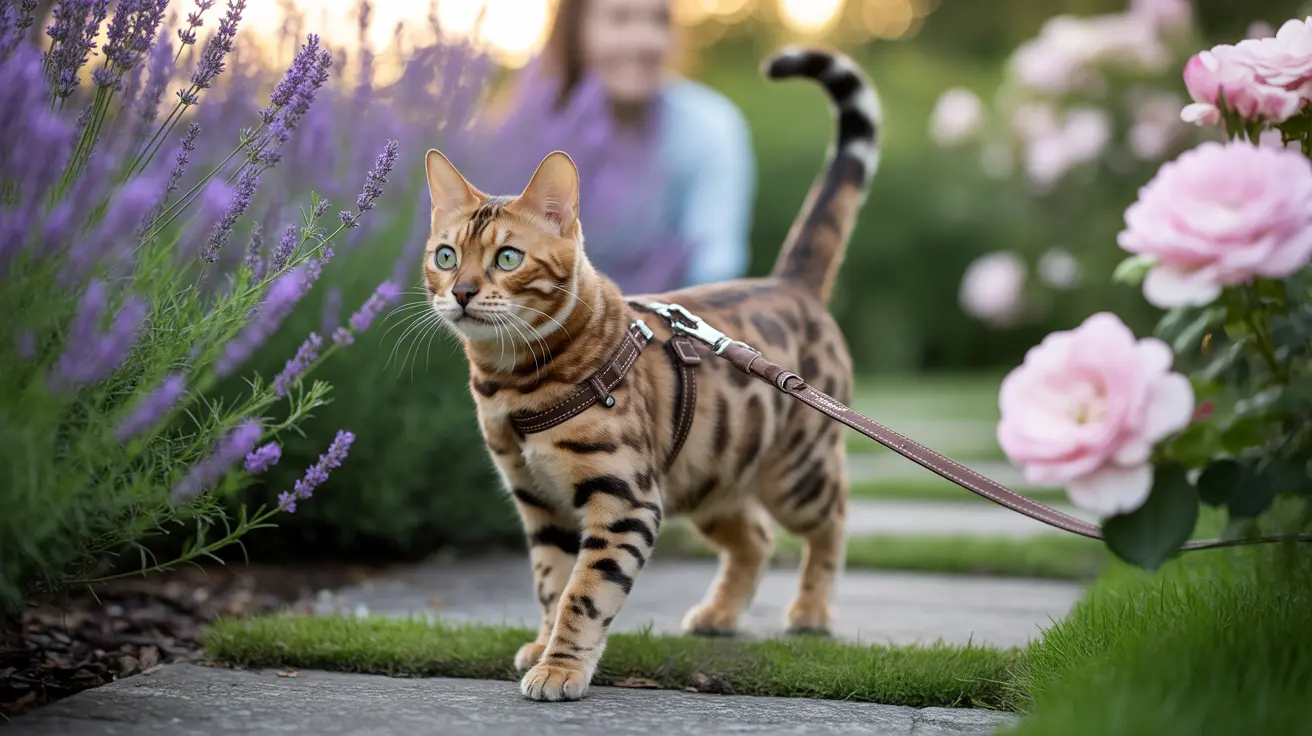Essential Health Preparations Before Going Outdoor
Before allowing your indoor cat outside, several critical health measures must be addressed to protect their wellbeing:
- Ensure all vaccinations are current, including rabies, FeLV, and FIV
- Schedule a thorough veterinary check-up
- Apply appropriate flea, tick, and worm preventatives
- Consider microchipping if not already done
- Install a breakaway collar with ID tags
These preventive measures create a strong foundation for your cat's outdoor adventures while minimizing health risks.
Creating a Safe Transition Strategy
A methodical approach to outdoor introduction helps your cat adjust confidently:
Start with Supervised Sessions
- Begin with 10-15 minute supervised outdoor sessions
- Use a harness and leash for initial explorations
- Choose quiet times of day for first outings
- Stay close to provide security and confidence
Establish Reliable Recall
Teaching your cat to return when called is crucial for their safety:
- Use consistent verbal cues or sounds
- Reward returns with high-value treats
- Practice recall indoors first
- Schedule outdoor time before meals
Setting Up a Safe Outdoor Environment
Creating a secure outdoor space helps prevent accidents and reduces risks:
- Install cat-proof fencing if possible
- Remove toxic plants from your yard
- Provide multiple water sources
- Create shelter spots for weather protection
- Ensure escape routes from potential threats
Managing Potential Risks
Understanding and preparing for outdoor hazards is essential:
- Monitor local wildlife activity
- Be aware of neighborhood pets
- Check weather conditions before allowing outdoor access
- Keep emergency contact information readily available
- Consider GPS tracking devices
Alternative Options to Consider
Some alternatives can provide outdoor enrichment with reduced risk:
- Install a catio or enclosed outdoor space
- Create window perches for safe outdoor viewing
- Set up supervised harness walks
- Build vertical outdoor climbing spaces
Frequently Asked Questions
How do I safely transition my indoor cat to spending time outdoors?
Start with short, supervised sessions using a harness and leash. Gradually increase outdoor time as your cat becomes more confident, always maintaining a consistent routine and positive reinforcement.
What health precautions should I take before letting my indoor cat outside?
Ensure all vaccinations are current, apply parasite prevention, microchip your cat, and have them wear a breakaway collar with ID. Schedule a veterinary check-up to confirm your cat is healthy enough for outdoor activity.
What are the best methods to train my cat to come back inside after outdoor time?
Use consistent verbal cues, establish a routine around mealtimes, and offer high-value treats as rewards. Practice recall training indoors first, then gradually implement it during outdoor sessions.
How can I create a safe outdoor environment for my cat to prevent accidents and protect local wildlife?
Install cat-proof fencing, remove toxic plants, provide multiple hiding spots and water sources, and create designated safe zones. Consider adding a bell to your cat's collar to alert wildlife.
Are there alternatives to letting my cat roam freely outdoors that still provide outdoor stimulation?
Yes, options include building a catio, taking supervised harness walks, creating window perches, and installing outdoor climbing structures within a contained area.
Conclusion
Transitioning an indoor cat to outdoor life requires patience, preparation, and dedication. By following these guidelines and maintaining consistent safety measures, you can help your cat adapt to outdoor living while minimizing risks. Remember that every cat is unique, so adjust your approach based on your pet's individual needs and responses.






